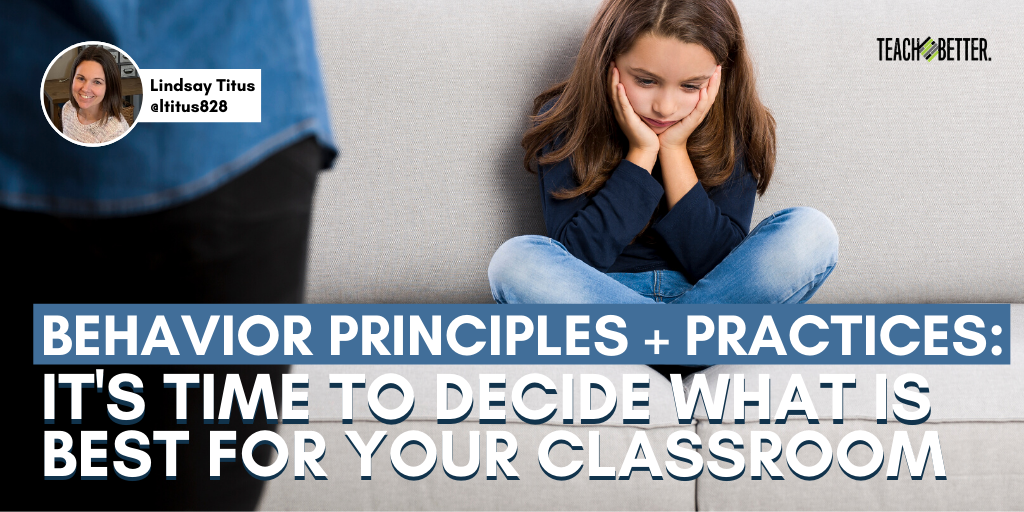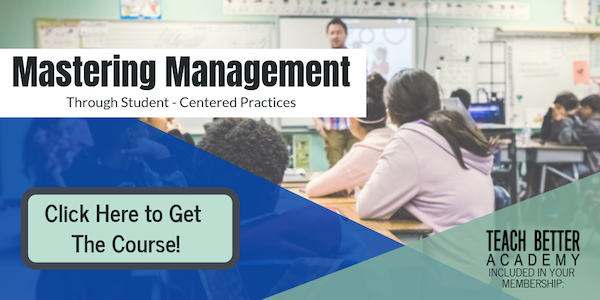TL;DR:
- Turning behavior principles into behavior practices using clearly defined expectations, visual supports, and connecting with students.
- Understanding the principles can help us create an authentic classroom community.
As a board-certified behavior analyst, I spend a lot of my time teaching and training about behavioral principles. We unpack what they are and what they are not. Together with teams, I help them understand why they are necessary. In addition to these essential questions, I teach educators how to practice these principles in their classroom.
One internet search of “common behavior principles” will yield over 425 million results. It’s no wonder so many educators feel overwhelmed when it comes to selecting behavior principles for their classroom plans. This is where practice, or the action steps we will take, is essential. I encourage and empower educators to take the principles and turn them into behavior practices in their classroom. This combination is what can take any classroom and transform it into a dynamic and authentic learning experience for everyone.
When we combine a strong mindset with powerful language and aligned action, we can create an experience for ourselves, our students, and our classroom community that is anchored in excellence for all. Click To TweetWhen we refer to turning behavior principles into behavior practices, here are three examples that you can easily incorporate into your classroom today!
Behavior Principle 1: Have clearly defined rules and expectations in your classroom.
Putting it into practice:
- Make sure each rule or expectation in your room aligns to a classroom value.
- Get your students involved in creating the rules of the classroom.
- Provide several opportunities to practice the rules and focus on what the actions look like and sound like with students throughout the school year.
- Teach students how to hold you accountable as well!
Behavior Principle 2: Use visual supports to increase student engagement.
Putting it into practice:
- Consider how you will you use visuals to show when one activity has ended and another is beginning.
- Know which visuals you will use to provide feedback if/when needed.
- Provide time for students to create visuals that will be used in the classroom.
Behavior Principle 3: Connect with students and strengthen relationships.
Putting it into practice:
- Spend the first and last 1-3 minutes of the day (or class period) interacting with students on anything other than academics. Keep this time open to connect with who the student is outside of your class.
- Be an A.C.E. when interacting!
- Acknowledge students by their first name.
- Compliment first.
- Provide Eye contact while speaking.
- Spend time with students outside of required time! For example, you can say hi on the bus loop, play a game during lunch, or walk out to the buses at the end of the day. These are all simple and easy ways to make this happen!
Turning Behavior Principles into Practice: Creating Your Authentic Classroom
When we talk about putting principles into practice, the question to ask is, “how will this look, feel, and sound in my classroom?” The process gets to be simple and easy. When we understand a principle, the purpose it has, and can state how it will be practiced our classrooms, we create a classroom community that is authentic to who we are as educators!
If we are implementing principles because we think we should, to that I say, “get out of shouldville”. Implement principles into your practice because it is what is best for your students. When we combine a strong mindset with powerful language and aligned action, we can create an experience for ourselves, our students, and our classroom community that is anchored in excellence for all.
We take action on things we believe and/or understand. Therefore, it is essential that as educators we first understand the behavior principles we are utilizing and then ensure we are practicing them within our classroom, with our own added creative spin. Our authenticity shines through our daily teaching and also through our daily interactions and connections. When we create a classroom community filled with practices that we understand and trust, we ignite our passion every single day.
About Lindsay Titus
Lindsay Titus is a K-12 Behavior Specialist with a license in behavior analyst. As a Board Certified Behavior Analyst, Lindsay coaches and trains educators on the study of behavior and how to implement evidence based behavior principles in simple and easy ways! With experience as a classroom special education teacher, and behavior specialist in public schools, residential placement, and private settings, Lindsay enjoys working with all educators looking to reignite their passion for education, connect with all students, and conquer challenging behavior in any classroom setting.




